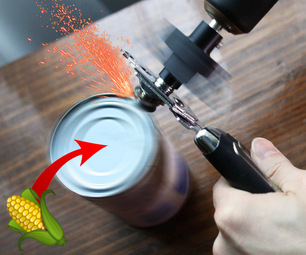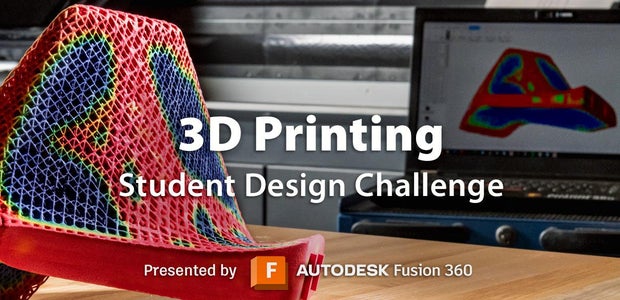Introduction: String Pong
Isaac - Seaquam Secondary School Grade 11
I prefer to play games where minimal thinking is required, where there's one clear objective. Pong is one of those games, and I love it for that; there aren't any questions asked. Just make sure the ball doesn't hit your side! There have been many attempts to recreate this game in real life; one of those is a coffee table that utilizes magnets and knobs, which is insanely cool and additionally insanely expensive. I created a cheaper alternative and sought out to recreate the characteristics of the original game that we all know and love.
You score a point when the ball hits the other side, which makes a noticeable knocking sound, or if the ball goes out of bounds, which occurs when you shoot too hard into the sides. However, I prefer not to keep score because the actual fun is in keeping up rallies.
Unlike the original game, the bumpers are rounded; this allows each player to have a lot of control over where the ball goes. The gameplay changes speed depending on each player's tactics. This can be a rapid-fire boxing match or a slow, deliberate penalty shoot-out. No matter what, kids of any age can play it well (as my younger brother proved)!
Because of its flexible boundaries, this is a game that can be adjusted, remade, and replayed. The ratchets at the corners, which can both be tightened and loosened easily, allow the elastic walls to be configured into different shapes and change size depending on how you want to play the game. It's easy to pack everything up and bring it somewhere else when you're done.
Supplies
I used Fusion360 to design all my parts and exported the STLs from there.
- 3D printer
- Hot glue gun
- 2mm nylon elastic cords
- Small rubber bands
- Sandpaper
- Two pen springs (optional)
- Cardboard (optional)
- Gaffer tape (optional)
Attachments
 BumperBumpingThing.stl
BumperBumpingThing.stl BumperButtonArm.stl
BumperButtonArm.stl CaseGuidesVariant.stl
CaseGuidesVariant.stl Button.stl
Button.stl CaseUpperVariant.stl
CaseUpperVariant.stl DualSlide.stl
DualSlide.stl Link.stl
Link.stl Lock.stl
Lock.stl Rail.stl
Rail.stl LeftCrankBase.stl
LeftCrankBase.stl LeftCrankCover.stl
LeftCrankCover.stl LeftCrankGear.stl
LeftCrankGear.stl LeftCrankReel.stl
LeftCrankReel.stl LeftCrankStringGuide.stl
LeftCrankStringGuide.stl LeftCrankTooth.stl
LeftCrankTooth.stl LeftCrankUpperFrame.stl
LeftCrankUpperFrame.stl RightCrankBase.stl
RightCrankBase.stl RightCrankCover.stl
RightCrankCover.stl RightCrankGear.stl
RightCrankGear.stl RightCrankReel.stl
RightCrankReel.stl RightCrankStringGuide.stl
RightCrankStringGuide.stl RightCrankTooth.stl
RightCrankTooth.stl RightCrankUpperFrame.stl
RightCrankUpperFrame.stl
Step 1: Left Crank
7 parts are needed for this step: LeftCrankBase, LeftCrankCover, LeftCrankGear, LeftCrankReel, LeftCrankStringGuide, LeftCrankTooth, and LeftCrankUpperFrame.
Place the crank gear in the center of the crank upper-frame. The rod in the back of the gear should fit right into the hole in the center of the crank upper-frame.
Flip over the crank upper-frame, gluing the reel to the rod sticking out of the gear.
String the nylon cord through the string guide and then through the loop in the reel, tying a knot on the other end. I tied three knots, which kept the nylon cord from slipping back through the hole. This is also much easier to do than tying it directly to the reel, as you aren't obstructed by the base.
Flip the crank upper-frame over again; the crank gear should be facing up. Put the tooth onto the rod sticking out of the upper frame; then, hook the small rubber band around the tooth and around the material sticking out from the wall the tooth leans on.
Hot glue the crank cover on top of the crank upper-frame; afterwards, hot glue the crank base under the crank upper-frame.
The left crank is completed!
Step 2: Right Crank
Repeat the steps in Step 1. Make sure the crank gear and crank tooth are made for the right side and not the left side.
The difference in the two is that the right side crank gear and tooth spin counterclockwise while the left side crank gear and tooth spin clockwise.
Step 3: Tie
Cut the 2mm nylon cord and use it to tie the right crank to the left crank, threading it through the string guide first. I cut the cord to a length of about 3 feet, and used a lot less of this when actually playing the game.
Step 4: Repeat
Repeat steps 1-3 and make another pair of tied together left and right cranks.
Step 5: Bumper
Hot glue the button onto the button arm.
Stick the button arm onto long side the case guides variant and on the shorter side, stick on the round shaped bumping thing (I don't have a good name for it). Place the link on top of the two parts so that it goes through both of the round shapes sticking out of them, completing the linkage.
Place the upper part of the case on top of the bottom one, sealing the bumping thing, the linkage, and the button arm inside. You may have to support the bumping thing from the bottom so it doesn't fall out of the case.
Add the lock to the side of the now combined cases, using hot glue to hold it in. There are small niches in the cases that it fits in smoothly; gluing it in should provide the proper amount of support.
Slide the dual slide through the bumper lock. Make sure it is able to slide up and down.
Use a small rubber band and string it through the bumper bumping thing. Hook them on the sides on the case variants. It's tricky, but I accomplished this by holding one end of the band, resting the other end on the edge of the hook and then using a pencil to push it all the way in.
↓
This was inspired by the Scott Russel linkage. It translates the linear motion from the person pressing to the bumper.
Step 6: Sand Guide Rails
Due to my 3D printer making the bases of the guide rails a bit wider than the rest of the rail, they caught a bit on the sliding parts. If this happens to you, use sand paper to sand the ends of the guide rail. I did it until there was a subtle but noticeable bevel, and this made everything work a lot smoother.
Step 7: Guide Rail
Screw the two rods together to create the guide rail. The screws I made were rather loose in order to absorb the impact from the bumper moving back and forth
Step 8: Attach
Attach the cranks to the table.
Attach 3 guide rails to the table as well, and don't forget the slider! To keep them from coming loose, first anchor the left corner, then anchor the right corner while pushing it towards the left.
Step 9: Crank in the Cord
Using a finger, crank in the nylon cord by rotating the gear connected to the nylon cord. For both the left and right cranks, turning in the direction of the arrow tightens the cord. Pulling the tooth up allows you to pull out the cord easily.
Step 10: Adjust Cord Height
Adjust the height of the cord to fit the ball you will be using; I try to adjust the height to about 2/3 of the height of the ball itself. I created the file so that the string holder was tight fitting and holds its position! However, if your printer has created a looser part, you can use the adhesive putty to hold it in place.
Step 11: Bumper and Springs
As an optional step, I added pen springs to the tops of the bumpers; this helps them pop up quicker and feels a lot more smooth.
Step 12: Play
There are multiple ways to play String Pong due to its adjustable nature! Through testing, I found that it was a lot more consistent and didn't stop when the two bumpers were positioned closer together. However, a further distance allows you to use 2 hands and press the button harder to hit the ball harder, which can also be fun and exciting.
The best playing experience we had was when we used it on a folding card table; since the two sides of the "court" were on inclines toward the paddles, the ball never got stuck which created a really fun playing experience. You can recreate this without a card table by using a wide tape (I used gaffer tape) and bent cardboard; this equivalent makes the ball move a lot faster, which can make for an extra challenge and feels a lot like tennis or ping pong. Another variation can be created by using the mounting putty to anchor guide rails or more stable objects to the table and using those to bend the string and make narrower or wider courts to play on.
When you're done playing, you can pull the corners off of the table, store the putty in a separate bag, and, after cranking all the cord in, you can store everything in a lunchbox.
Thank you for reading this Instructable! I was able to explore a lot about linkages and ratchets while making this project, and I really like the end result. If you like this Instructable, please consider voting for me in the Student Design Challenge; I really appreciate it! Feel free to ask any questions!
Until we meet again,
zakbobdop

Grand Prize in the
Game Design: Student Design Challenge





































6 Comments
22 days ago
This is SUPER COOL! I hope you WIN!!! I've downloaded this 'ible and am looking forward to printing and playing!
I teach fab lab to high school students, and this would be a neat project for them to print. Good job and keep it up.
4 weeks ago
Very nice, I want one! I have some ideas:
- What if all of the court borders were string and the bumpers were behind the string? That way there wouldn't be "dead" corners.
- Also the rail parts could be made from rigid multilayer water pipes, they would be sturdier, slide great and have no seams. Of course, they wouldn't fit in a lunchbox then..
- And you could use painter's or duct tape under the bumpers to protect the table surface from scratching if needed.
Reply 27 days ago
Those are good ideas! I did try to reduce the amount of dead space on the court, which is why the string is positioned on the inside of the reels and not on the outside; I can see how bending the string around the corners would help a lot. I made the game rail into separate pieces so it'd be easier to print and, as you're aware, more compact; however, a one piece rail is a great idea that would improve the gameplay significantly. As for the tape, I think painter's would be really useful to reduce friction.
Thanks for the advice!
Question 4 weeks ago on Step 12
Looks like a simple, fun project. Thank you!
What do you recommend that we use for the ball?
Answer 27 days ago
I found that a heavy marble with around a 1 inch diameter was the best. A bouncy ball was also fun to play with as well :)
4 weeks ago
This looks like a fun game!